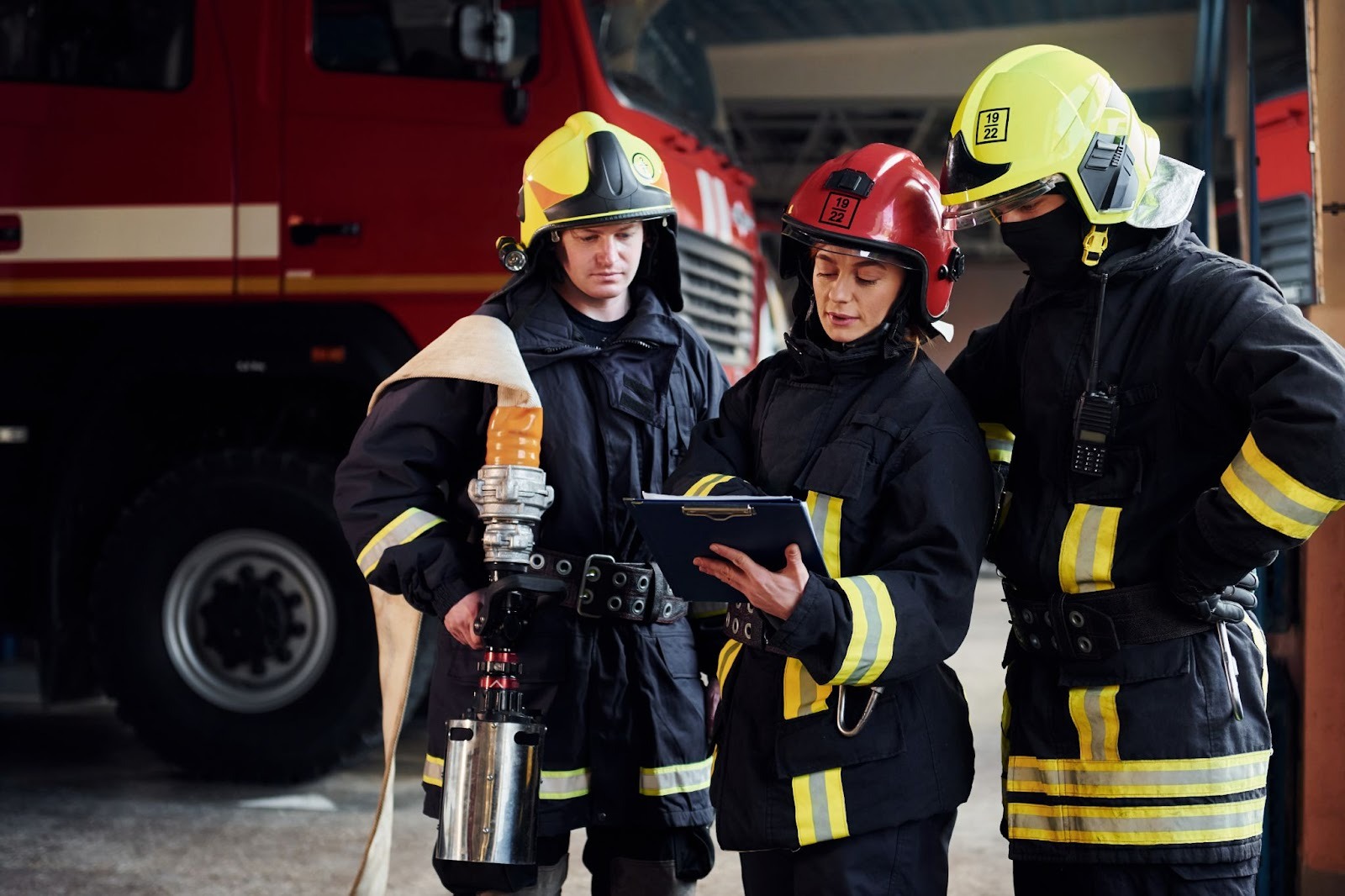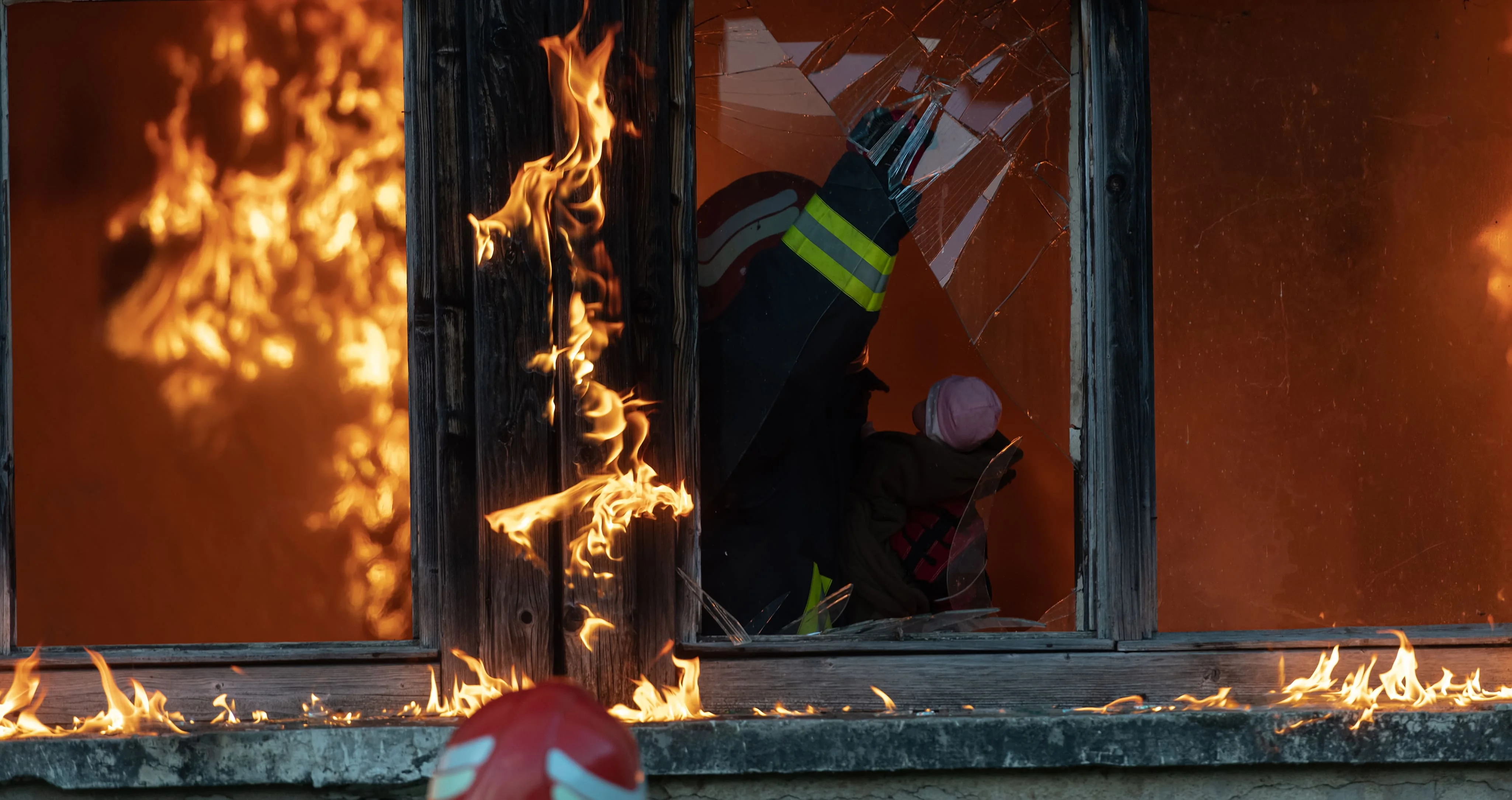What is Fire Inspection


Fire protection inspection is one of those things every fire investigator knows is essential, but few fully appreciate in its depth until they’re on the line, staring at a building with unknown risks. It’s about understanding systems, anticipating hazards, and ensuring both occupant and crew safety before a single alarm is pulled. In the U.S., fire departments use these inspections to reduce risk, enforce codes, and gather critical pre-incident intelligence.
This guide will walk you through everything you need to know about fire protection inspection, from practical guidance and technical insight, to operational context.
Fire protection inspection is more than a routine check. It’s a core element of modern firefighting strategy. It ensures that systems, structures, and occupants are ready for emergencies. For crews, this inspection process transforms unknown hazards into tactical intelligence that can save lives.
The Three Things Every Inspection Accomplishes
Every fire inspection serves three basic purposes that directly impact safety and legal liability:
- Code compliance verification. Those fire safety codes aren't random rules. They're standards developed from decades of real disasters and fire science. The inspector makes sure your building meets current requirements.
- Hazard identification. They look for conditions that could contribute to fires, like improper storage of flammable materials, faulty electrical systems, or blocked exits.
- Emergency preparedness. They ensure that if a fire does happen, people can get out safely and firefighters can do their job.
Not all inspections are created equal. While fire safety inspections focus on code compliance, fire protection inspections emphasize operational readiness and pre-incident planning. Recognizing the distinction improves crew preparation and reduces line-of-duty risk.
Operational vs Compliance Mindset
Fire safety inspections are largely regulatory. Fire protection inspections, on the other hand, answer tactical questions:
- Are sprinkler systems fully functional?
- Are exits unobstructed?
- Can crews quickly access fire control points?
This operational focus provides intelligence that compliance alone cannot.
Even small changes in language can influence outcomes. Departments labeling inspections as “fire protection” set expectations for thorough, actionable evaluation, rather than just compliance auditing.
Fire protection inspections serve multiple purposes. Understanding the different categories helps departments allocate resources and prioritize high-risk areas effectively.
Preventive Inspections
Preventive inspections are routine evaluations aimed at identifying hazards before incidents occur. They are essential for maintaining operational readiness and protecting both occupants and crews.
Permit or Construction-Based Inspections
These inspections occur during construction or renovation. They ensure that newly installed fire protection systems comply with NFPA standards and are operational before occupancy.
Post-Incident Inspections
Post-incident inspections assess system performance after fires or alarms. They reveal failures and areas for improvement, feeding critical lessons back into department procedures.
Compliance and Re-Inspection Cycles
Some inspections are mandated to verify that previously identified violations have been corrected. Departments must balance re-inspections with available resources, often performing them quarterly, semi-annually, or annually.
Every fire protection inspection serves multiple overlapping objectives. Understanding these objectives helps departments conduct meaningful, actionable inspections.
Life Safety and Occupant Protection
The first objective is always people. Fire protection inspections confirm that alarms, sprinklers, and exit systems are functional to protect occupants in the event of a fire.
Crew Safety and Tactical Readiness
Firefighters rely on pre-incident intelligence to anticipate hazards. Inspections help crews understand building layouts, fuel loads, and potential chemical hazards.
Reducing Chaos in First Five Minutes
Early knowledge of a building’s systems and vulnerabilities allows crews to act decisively during the critical initial moments of an incident, reducing both property loss and line-of-duty injuries.
NFPA standards provide the backbone for U.S. fire protection inspections. They guide procedures, documentation, and enforcement, ensuring consistent and safe practices across departments.
Key NFPA Codes Referenced in U.S. Inspections
The most commonly referenced codes include:
- NFPA 1 – Fire Code
- NFPA 25 – Inspection, Testing, and Maintenance of Water-Based Systems
- NFPA 72 – National Fire Alarm and Signaling Code
- NFPA 101 – Life Safety Code
These codes outline inspection criteria, frequency, and reporting requirements, providing a framework for operational consistency.
Local Authority Having Jurisdiction (AHJ) Variations
Authority Having Jurisdiction (AHJs) often supplement NFPA codes with local ordinances. Departments must understand and integrate these variations to ensure inspections meet both federal standards and local compliance requirements.
The paperwork from fire inspections isn't bureaucratic busy work. It's a legal document that can protect you or hurt you depending on how seriously you take it. Proper documentation serves multiple purposes: legal protection for both parties, administrative records for tracking compliance, and educational value explaining what needs fixing and why.
A comprehensive report includes way more than just a violation list:
- Property information and occupancy type
- Scope of what was actually inspected
- Specific code violations with references to standards
- Risk assessment for different hazards
- Exact corrective actions required
- Realistic timelines for compliance
- Follow-up inspection scheduling
- Inspector credentials and contact information
- Property owner acknowledgment
This level of detail protects everyone and ensures there's no confusion about what needs to be done.

Before diving in, it’s important to note: a systematic approach ensures nothing is overlooked, reduces errors, and enhances both crew and occupant safety. The following steps represent best practices followed by U.S. fire departments and align with NFPA standards.
1. Preparation and Planning
Start by gathering all available building information:
- Review previous inspection reports and violation history
- Identify high-risk areas or occupancies
- Assemble inspection tools: digital tablet, checklist, flashlight, personal protective equipment (PPE), and measuring devices
2. Exterior Assessment
- Check for clear access to the building and hydrants
- Inspect parking lots, storage areas, and exterior hazards
- Ensure signage is visible and building numbering is correct
3. Interior Systems Inspection
- Test fire alarms, smoke detectors, and manual pull stations
- Verify sprinklers and standpipes are functional
- Check fire pumps, backflow preventers, and emergency lighting
- Examine fire doors, stairwells, and egress pathways
4. Mechanical and Electrical Components
- Inspect generators and emergency power supplies
- Verify HVAC systems don’t interfere with smoke or fire control systems
- Check for improperly stored flammable or hazardous materials
5. Occupancy and Hazard Review
- Evaluate combustible materials and storage practices
- Identify any HazMat presence
- Verify that occupant loads match safety plan documentation
6. Documentation and Reporting
- Record observations digitally (photos, notes, readings)
- Flag violations for follow-up
- Integrate findings into the department’s pre-incident planning system
7. Follow-Up and Re-Inspection
- Schedule corrective action verification
- Maintain detailed records for legal compliance and operational planning
- Update NFIRS or local reporting system
Inspection records directly inform tactical decisions, reducing uncertainty during emergencies.
Tactical Intelligence Through Inspection Records
Knowing sprinkler zones, alarm panels, and standpipe locations in advance allows crews to respond efficiently and safely.
Turning Inspections Into Pre-Plan Gold
Inspections feed into pre-incident plans, providing actionable intelligence that guides deployment, containment, and occupant rescue.
Effective inspections rely on skilled, knowledgeable personnel. Training trends are evolving to meet these demands.
Certification and Code Knowledge Gaps
NFPA inspector certification is increasingly required. Departments emphasize both technical knowledge and hands-on experience.
Hands-On vs Administrative Inspection Approaches
Field verification is critical. Inspectors must physically test systems rather than relying solely on administrative records to ensure operational readiness.
Fire protection inspection is an important tool for safeguarding both occupants and firefighters. By systematically evaluating fire protection systems, identifying hazards, and gathering pre-incident intelligence, departments can reduce risk, improve response effectiveness, and prevent property loss. Inspections are a strategic part of operational readiness.
To make inspections truly effective, departments should follow structured processes, use digital tools for reporting and pre-incident planning, and prioritize high-risk occupancies. When executed consistently, fire protection inspections turn unknown hazards into actionable knowledge, giving crews the insight they need to respond safely and efficiently.
Trusted by Public and Private Investigator Teams Everywhere
Whether you're a big state agency, a small local fire department or somewhere in between, Blazestack software (NFPA 921® & CJIS compliant) collects fire scene data and generates standardized origin and cause reports in a fraction of the time of other methods.
To learn more about Blazestack, give us a call at (866) 303-4344 or email us at support@blazestack.com
Get Your Free 14-Day Trial and Custom Price Quote Now
We'll let Blazestack do the talking. Try it out right now for free.
A member of our staff will be in touch shortly.


